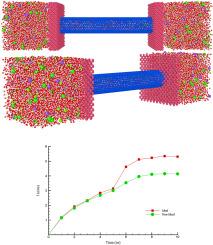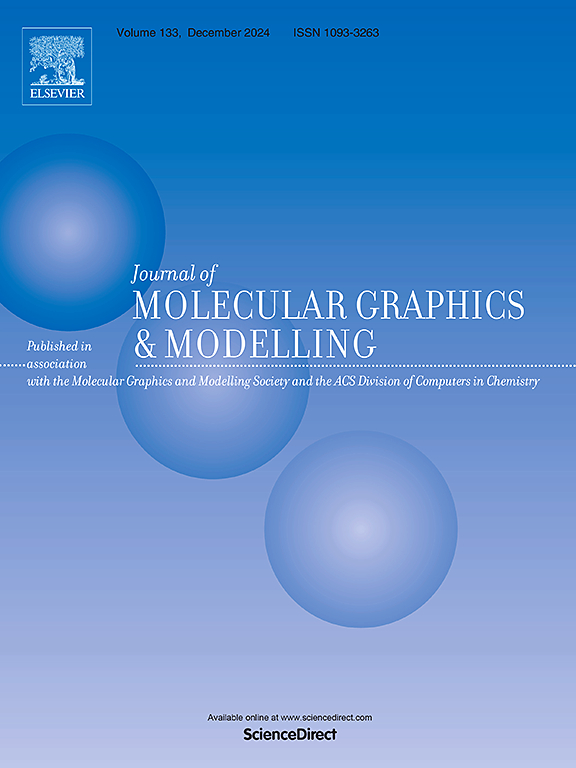Effect of channel roughness on the particle diffusion and permeability of carbon nanotubes in reverse electrodialysis process applying molecular dynamics simulation
IF 2.7
4区 生物学
Q2 BIOCHEMICAL RESEARCH METHODS
引用次数: 0
Abstract
Innovative technology and methods are crucial for making pure and refreshing water. Two main methods are present to delete soluble salts from water: membrane processes and thermal processes. A beneficial membrane technique is reverse electrodialysis. This research used molecular dynamics (MD) simulation to investigate how channel roughness affected particle diffusion and permeability in carbon nanotubes (CNTs) via the reverse electrodialysis process. The results indicate that adding roughness in the CNT duct increased the force between the primary fluid and the duct. Using an armchair-edged CNT structure maximized the electric current in the sample. Furthermore, the roughness increased the intensity of force in the channel, which was due to gravity, leading to a decrease in the mobility of fluid particles. Additionally, several broken hydrogen bonds inside the simulation box increased from 116 to 128 in the duct sample with roughness.

应用分子动力学模拟研究反向电渗析过程中通道粗糙度对碳纳米管颗粒扩散和渗透性的影响。
创新技术和方法对于制造纯净清爽的水至关重要。从水中去除可溶性盐分的方法主要有两种:膜法和热法。一种有效的膜技术是反向电渗析。本研究利用分子动力学(MD)模拟来研究通道粗糙度如何通过反向电渗析过程影响碳纳米管(CNTs)中颗粒的扩散和渗透性。结果表明,在 CNT 管道中增加粗糙度会增加原生流体与管道之间的作用力。使用 "扶手椅 "边缘的碳纳米管结构可使样品中的电流最大化。此外,由于重力作用,粗糙度增加了通道中的力强度,导致流体颗粒的流动性降低。此外,在带有粗糙度的管道样品中,模拟盒内断裂的氢键从 116 个增加到 128 个。
本文章由计算机程序翻译,如有差异,请以英文原文为准。
求助全文
约1分钟内获得全文
求助全文
来源期刊

Journal of molecular graphics & modelling
生物-计算机:跨学科应用
CiteScore
5.50
自引率
6.90%
发文量
216
审稿时长
35 days
期刊介绍:
The Journal of Molecular Graphics and Modelling is devoted to the publication of papers on the uses of computers in theoretical investigations of molecular structure, function, interaction, and design. The scope of the journal includes all aspects of molecular modeling and computational chemistry, including, for instance, the study of molecular shape and properties, molecular simulations, protein and polymer engineering, drug design, materials design, structure-activity and structure-property relationships, database mining, and compound library design.
As a primary research journal, JMGM seeks to bring new knowledge to the attention of our readers. As such, submissions to the journal need to not only report results, but must draw conclusions and explore implications of the work presented. Authors are strongly encouraged to bear this in mind when preparing manuscripts. Routine applications of standard modelling approaches, providing only very limited new scientific insight, will not meet our criteria for publication. Reproducibility of reported calculations is an important issue. Wherever possible, we urge authors to enhance their papers with Supplementary Data, for example, in QSAR studies machine-readable versions of molecular datasets or in the development of new force-field parameters versions of the topology and force field parameter files. Routine applications of existing methods that do not lead to genuinely new insight will not be considered.
 求助内容:
求助内容: 应助结果提醒方式:
应助结果提醒方式:


